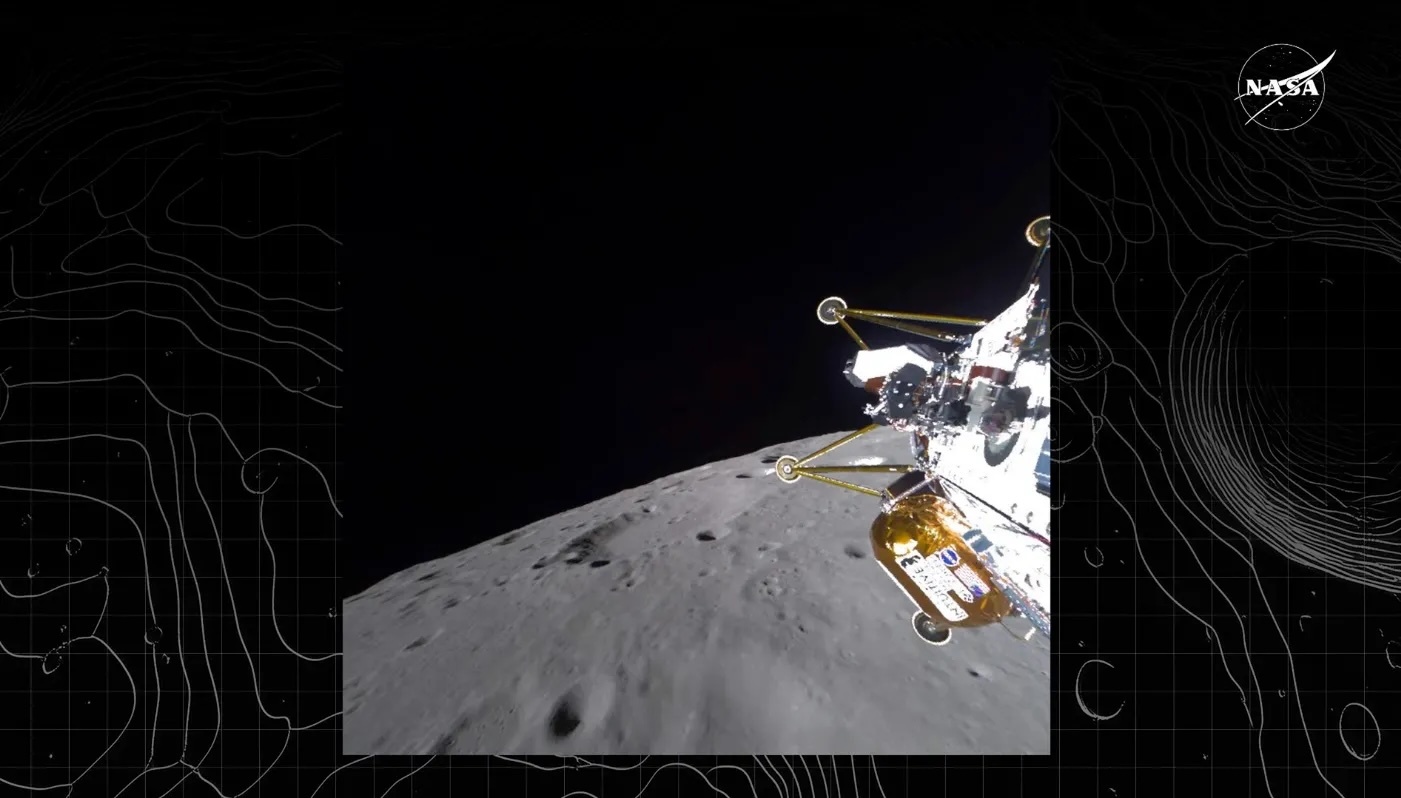10.04.2025

An image released by Intuitive Machines showing the IM-2 lander during its descent to the surface of the moon. Credit: Intuitive Machines/NASA webcast
COLORADO SPRINGS – Through government-backed lunar missions, companies are identifying customers for future flights.
International space agencies, universities, companies and rideshare customers contributed about 10 percent of the money that helped Intuitive Machines reach the moon March 6 with its second lander. The other 90 percent came from NASA’s Commercial Lunar Payload Services (CLPS) program.
The commercial market is real and its growing, Trent Martin, Intuitive Machines senior vice president for space systems, said April 7 at the 40th Space Symposium Space Law and Regulation Forum.
What’s more, scientific data gathered on the lunar surface will pave the way for commercial missions, said David Wheeler, Firefly general counsel. Regolith sample collection and return, for example, “are precursors for resource extraction and mining.”
Ananda Martin, ispace technologies U.S. general counsel, agreed.
As companies continue to diversify their revenue streams for lunar missions, they will find ways to apply the data they collect “to support further phases of lunar development, such as extraction and eventually human habitation,” ispace’s Martin said.
Gold Rush
NASA’s CLPS program was meant to spark commercial cislunar activity. But a report released in November by the Center for Strategic and International Studies found “no indication of a lunar gold rush.”
Space Symposium panelists said commercial interest, while nascent, is growing.
Repeated moon landings will make lunar flights more affordable and less risky, Wheeler said. “I’m not a policy guy. I’m not a regulatory guy. I’m a good old fashioned commercial lawyer. I worry about risk. I worry about making money for the company. And [demand] is there in the near term.”
For now, international space agencies are sending payloads on CLPS missions.
“They don’t have $150 million to fund a mission, but maybe they have $10 million to fund a small instrument that they want to fly on the lander,” Trent Martin said. “We have multiple contracts with other space agencies right now to fly future payloads on future missions to the moon.”
In addition, Intuitive Machines also helped fund the IM-2 mission by purchasing a SpaceX Falcon 9 and offering orbital transportation for NASA’s Lunar Trailblazer, Astroforge Odin asteroid mining scout and Epic Aerospace Chimera orbital transfer vehicle.
Those rideshares revealed another business opportunity: cislunar communications.
“Communication with those [rideshare] satellites was difficult at lunar distance, prompting them to come back and ask to use our lunar data network,” Martin said.
Quelle: SN
